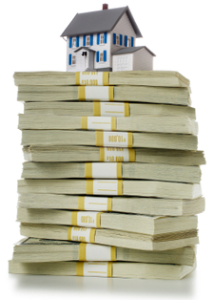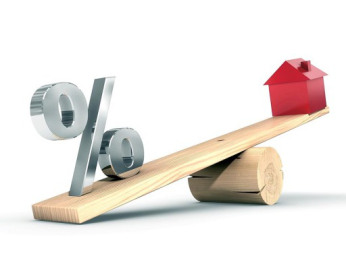Cash Sales Dominate Real Estate Market
Blog, Real Estate Tips, Selling | Dunham Stewart More than half of all homes sold last year and in 2013, so far, have been purchased mortgage-free, according to economists at Goldman Sachs Group. Prior to the housing crash, about 20 percent of all homes sold were purchased without financing. All-cash sales have more than doubled over the last seven years. The analysis estimates that around 20% of all homes sold before the housing crash were “all-cash” sales. The surprisingly large cash-share of purchases helps to explain why home sales have jumped over the past two years despite smaller increases in the new mortgage activity indexes, such as the MBA’s mortgage application index. The analysis also estimates that around 44 cents of every $1 of homes sold currently is being financed, compared to 67 cents before the crisis. There’s no exact way to know who is responsible for all of these cash purchases, though they are likely to include some combination of investors, foreign buyers, and wealthy homeowners that don’t want to go through the hassle of getting a mortgage before closing on a sale. The Goldman study analyzed home sales figures from the Census Bureau and the National Association of Realtors and mortgage-origination data from the Mortgage Bankers Association and Lender Processing Services.
More than half of all homes sold last year and in 2013, so far, have been purchased mortgage-free, according to economists at Goldman Sachs Group. Prior to the housing crash, about 20 percent of all homes sold were purchased without financing. All-cash sales have more than doubled over the last seven years. The analysis estimates that around 20% of all homes sold before the housing crash were “all-cash” sales. The surprisingly large cash-share of purchases helps to explain why home sales have jumped over the past two years despite smaller increases in the new mortgage activity indexes, such as the MBA’s mortgage application index. The analysis also estimates that around 44 cents of every $1 of homes sold currently is being financed, compared to 67 cents before the crisis. There’s no exact way to know who is responsible for all of these cash purchases, though they are likely to include some combination of investors, foreign buyers, and wealthy homeowners that don’t want to go through the hassle of getting a mortgage before closing on a sale. The Goldman study analyzed home sales figures from the Census Bureau and the National Association of Realtors and mortgage-origination data from the Mortgage Bankers Association and Lender Processing Services.

 If you’re thinking about selling your home, there are two things that you probably want: to sell it for a high price, and to sell your house fast with as little hassle as possible. The market is currently trending in favor of the seller side of the real estate transaction, which means this is doable, if follow some wise advise. First, Use a Realtor. Even in a sellers market, it’s highly unlikely that you’ll sell your house fast without a realtor. Besides the knowledge and skill that comes from with years of experience, a real estate professional has the administrative support to handle everything from calls scheduling showings to fax machines that receive the offers. A realtor will help you sell your house as quickly as possible. Second, Be Emotionally Ready. Perhaps the largest roadblock to selling a house quickly is that you aren’t emotionally ready to sell, and so you don’t take the steps you need to get your house ready to market. Only once you are ready to let go of your home will you be able to get in the best place for a quick sale. If you aren’t ready, you won’t take your realtor’s advice about getting rid of mementos because you’ll be personally offended. Or you won’t fix things because you’ll think that the buyers will be OK with the damage — just as you lived with it all these years. Third, Stage and Declutter. The No. 1 way to sell your house quickly is to have it show like a model home. Preparing you home to hit the market takes a lot of work, in fact it should take at least the equivalent of a 40 hour work week. Pack up clutter, move furniture to the garage, post on Craigslist and give things to charity. Friends and family should not recognize the listing photos of your house because it looks so different from all of the staging and decluttering. Fourth, Use The Realtor’s Listing Price. This piece of advice is going to be controversial — but I believe that you should list your home at the listing price your realtor recommends. Ideally, you’ll have interviewed several realtors and have chosen the one that you feel is the best experienced in your market. If that’s the case, choose a list price in the range they suggest based on market research.
If you’re thinking about selling your home, there are two things that you probably want: to sell it for a high price, and to sell your house fast with as little hassle as possible. The market is currently trending in favor of the seller side of the real estate transaction, which means this is doable, if follow some wise advise. First, Use a Realtor. Even in a sellers market, it’s highly unlikely that you’ll sell your house fast without a realtor. Besides the knowledge and skill that comes from with years of experience, a real estate professional has the administrative support to handle everything from calls scheduling showings to fax machines that receive the offers. A realtor will help you sell your house as quickly as possible. Second, Be Emotionally Ready. Perhaps the largest roadblock to selling a house quickly is that you aren’t emotionally ready to sell, and so you don’t take the steps you need to get your house ready to market. Only once you are ready to let go of your home will you be able to get in the best place for a quick sale. If you aren’t ready, you won’t take your realtor’s advice about getting rid of mementos because you’ll be personally offended. Or you won’t fix things because you’ll think that the buyers will be OK with the damage — just as you lived with it all these years. Third, Stage and Declutter. The No. 1 way to sell your house quickly is to have it show like a model home. Preparing you home to hit the market takes a lot of work, in fact it should take at least the equivalent of a 40 hour work week. Pack up clutter, move furniture to the garage, post on Craigslist and give things to charity. Friends and family should not recognize the listing photos of your house because it looks so different from all of the staging and decluttering. Fourth, Use The Realtor’s Listing Price. This piece of advice is going to be controversial — but I believe that you should list your home at the listing price your realtor recommends. Ideally, you’ll have interviewed several realtors and have chosen the one that you feel is the best experienced in your market. If that’s the case, choose a list price in the range they suggest based on market research.
 The luxury real estate market is showing healthy signs of growth compared to one year ago. For the first time since the Institute for Luxury Home Marketing began tracking upper tier market trends in 2008, its Market Action Index hit the threshold that separates buyer’s and seller’s markets earlier this month. The highest tier of homes for sale, has been the last part of the market to feel the effects of the housing recovery. On June 2, the ILHM reported its Market Action Index had reached 30 for the first time and in subsequent weekly reports the index has maintained its position. The Market Action Index (MAI) illustrates the balance between supply and demand using a statistical function of the current rate of sale versus current inventory. An MAI value greater than 30 typically indicates a “Seller’s Market” (a.k.a. “Hot Market”) because demand is high enough to quickly consume available supply. A hot market will typically cause prices to rise. MAI values below 30 indicate a “Buyer’s Market” (a.k.a. “Cold Market”) where the inventory of already-listed homes is sufficient to last several months at the current rate of sales. A cold market will typically cause prices to fall.
The luxury real estate market is showing healthy signs of growth compared to one year ago. For the first time since the Institute for Luxury Home Marketing began tracking upper tier market trends in 2008, its Market Action Index hit the threshold that separates buyer’s and seller’s markets earlier this month. The highest tier of homes for sale, has been the last part of the market to feel the effects of the housing recovery. On June 2, the ILHM reported its Market Action Index had reached 30 for the first time and in subsequent weekly reports the index has maintained its position. The Market Action Index (MAI) illustrates the balance between supply and demand using a statistical function of the current rate of sale versus current inventory. An MAI value greater than 30 typically indicates a “Seller’s Market” (a.k.a. “Hot Market”) because demand is high enough to quickly consume available supply. A hot market will typically cause prices to rise. MAI values below 30 indicate a “Buyer’s Market” (a.k.a. “Cold Market”) where the inventory of already-listed homes is sufficient to last several months at the current rate of sales. A cold market will typically cause prices to fall.
 Home prices have regained nearly half of the value lost since prices peaked in June 2006 and prices rose 1.5 percent last month and 4.5 percent above January prices. Existing-home sales in the West increased 2.5 percent to a pace of 1.23 million in May and are 7.0 percent above a year ago. With the tightest regional supply, the median price in the West was $276,400, up 19.9 percent from May 2012, according to the National Association of Realtors. Sales have stayed above year-ago levels for 23 months, while the national median price shows 15 consecutive months of year-over-year increases. The same rising prices that are boosting inventories also drove investors out of the market, according to the latest Campbell/Inside Mortgage Finance HousingPulse Tracking Survey. The investor share of home purchases tumbled from 22.0 percent in April to 20.2 percent in May based on a three-month moving average. That was the sharpest drop in investor activity recorded in more than three years. According to NAR, Individual investors purchased 18 percent of homes in May; they were 19 percent in April. Both current homeowners and first-time homebuyers increased their participation in the home purchase market between April and May. Current homeowners accounted for 43.8 percent of home purchases last month while first-time homebuyers represented 36.0 percent in May, HousingPulse results showed.
Home prices have regained nearly half of the value lost since prices peaked in June 2006 and prices rose 1.5 percent last month and 4.5 percent above January prices. Existing-home sales in the West increased 2.5 percent to a pace of 1.23 million in May and are 7.0 percent above a year ago. With the tightest regional supply, the median price in the West was $276,400, up 19.9 percent from May 2012, according to the National Association of Realtors. Sales have stayed above year-ago levels for 23 months, while the national median price shows 15 consecutive months of year-over-year increases. The same rising prices that are boosting inventories also drove investors out of the market, according to the latest Campbell/Inside Mortgage Finance HousingPulse Tracking Survey. The investor share of home purchases tumbled from 22.0 percent in April to 20.2 percent in May based on a three-month moving average. That was the sharpest drop in investor activity recorded in more than three years. According to NAR, Individual investors purchased 18 percent of homes in May; they were 19 percent in April. Both current homeowners and first-time homebuyers increased their participation in the home purchase market between April and May. Current homeowners accounted for 43.8 percent of home purchases last month while first-time homebuyers represented 36.0 percent in May, HousingPulse results showed.
 Housing affordability remains high despite recent reports that show home prices saw their biggest year-over-year gains in more than seven years, according to NAR’s most recent report, reflecting data from the first quarter of 2013. The NAR’s quarterly reports on median pricing are a good measure of where prices in certain markets are headed generally, but their results can sometimes overstate the magnitude of price gains. “The supply/demand balance is clearly tilted toward sellers in a good portion of the country,” said Lawrence Yun, NAR’s chief economist, in a statement. Low mortgage rates and stabilizing incomes are keeping home affordability high and giving home buyers ample buying power. Still, credit remains tight for some buyers, especially those with damaged credit scores and those who are not able to save enough for a large down payment. Prices have also risen in large part because inventories of homes for sale have plummeted. Low inventories in some markets have sparked bidding wars among buyers.
Housing affordability remains high despite recent reports that show home prices saw their biggest year-over-year gains in more than seven years, according to NAR’s most recent report, reflecting data from the first quarter of 2013. The NAR’s quarterly reports on median pricing are a good measure of where prices in certain markets are headed generally, but their results can sometimes overstate the magnitude of price gains. “The supply/demand balance is clearly tilted toward sellers in a good portion of the country,” said Lawrence Yun, NAR’s chief economist, in a statement. Low mortgage rates and stabilizing incomes are keeping home affordability high and giving home buyers ample buying power. Still, credit remains tight for some buyers, especially those with damaged credit scores and those who are not able to save enough for a large down payment. Prices have also risen in large part because inventories of homes for sale have plummeted. Low inventories in some markets have sparked bidding wars among buyers.
 Only a year ago all the conversation was doom and gloom. Next we hear about the reviving housing market with talk of “green shoots”. Now it has become apparent that the real estate market is in a full upswing, with a rebound of 20% since the bottom of the downturn. However lately I have begun to hear talk of a housing bubble. Really, a housing bubble? Today’s market is driven by a shortage of supply, pent up demand and low interest rates. Not the abundant listings and lax lending standards as before. Lending standard remain stringent, and in the future the lack of easy money will act to temper any fever that may develop as prices rise. We tend to forget that real estate is cyclical. The market goes up and the market goes down. Right now the market is going up and should continue for several more years. Exactly how long is anybody’s guess.
Only a year ago all the conversation was doom and gloom. Next we hear about the reviving housing market with talk of “green shoots”. Now it has become apparent that the real estate market is in a full upswing, with a rebound of 20% since the bottom of the downturn. However lately I have begun to hear talk of a housing bubble. Really, a housing bubble? Today’s market is driven by a shortage of supply, pent up demand and low interest rates. Not the abundant listings and lax lending standards as before. Lending standard remain stringent, and in the future the lack of easy money will act to temper any fever that may develop as prices rise. We tend to forget that real estate is cyclical. The market goes up and the market goes down. Right now the market is going up and should continue for several more years. Exactly how long is anybody’s guess.
 Appraisers are the eyes into the local markets and the backbone of the real estate industy. We recommend staying engaged and understand their vision of the marketplace.”Slightly over half of appraisers in a recent survey expressed a degree of confidence in the housing market and nearly half reported appreciating home values in their markets. Appraisers tend to be realistic, focused on their local markets and unmoved by news stories and national numbers, they provide a good gauge of the status of the housing market. Opinions were slightly rosier regarding home values. Some 46.2 percent reported a mild increase in values in their area. Some 15.6 percent were seeing a moderate value increase, while 24 percent were neutral. Despite somewhat tepid feelings on the market in general, most appraisers reported increased order volume: 26.1 percent saw mild increases, 17.8 percent saw moderate increases and 18.5 percent reported significant volume increases. Only 15.3 percent of respondents reported any reduction in their order volume.
Appraisers are the eyes into the local markets and the backbone of the real estate industy. We recommend staying engaged and understand their vision of the marketplace.”Slightly over half of appraisers in a recent survey expressed a degree of confidence in the housing market and nearly half reported appreciating home values in their markets. Appraisers tend to be realistic, focused on their local markets and unmoved by news stories and national numbers, they provide a good gauge of the status of the housing market. Opinions were slightly rosier regarding home values. Some 46.2 percent reported a mild increase in values in their area. Some 15.6 percent were seeing a moderate value increase, while 24 percent were neutral. Despite somewhat tepid feelings on the market in general, most appraisers reported increased order volume: 26.1 percent saw mild increases, 17.8 percent saw moderate increases and 18.5 percent reported significant volume increases. Only 15.3 percent of respondents reported any reduction in their order volume.
 According to listing service Trulia, the annualized rate of listings for sale dropped 23-29% between March 2012 and September 2012. Since then, inventories of homes for sale have declined 12-21%. Zillow, a competitor to Trulia, reported that the number of listings fell 16.6% on a single day – February 24, 2013, compared to the same day in 2012. What does the slowdown of new listings on the market mean to buyers and sellers? Rapidly shrinking supplies typically leaves communities in a heated seller’s market with less than six months supply on hand. Ironically there are sellers that may pull back from the market, believing they can sell for more money later or that they won’t find another home. Buyers may be tempted to choose too quickly, just to get into the market. Locally, inventories are shrinking more rapidly than in other parts of the country. Some sellers may delay listing their homes, which improves the market further for listed sellers. This means that many underwater sellers can list their homes and sell them without losing equity. .
According to listing service Trulia, the annualized rate of listings for sale dropped 23-29% between March 2012 and September 2012. Since then, inventories of homes for sale have declined 12-21%. Zillow, a competitor to Trulia, reported that the number of listings fell 16.6% on a single day – February 24, 2013, compared to the same day in 2012. What does the slowdown of new listings on the market mean to buyers and sellers? Rapidly shrinking supplies typically leaves communities in a heated seller’s market with less than six months supply on hand. Ironically there are sellers that may pull back from the market, believing they can sell for more money later or that they won’t find another home. Buyers may be tempted to choose too quickly, just to get into the market. Locally, inventories are shrinking more rapidly than in other parts of the country. Some sellers may delay listing their homes, which improves the market further for listed sellers. This means that many underwater sellers can list their homes and sell them without losing equity. .
 The Federal Reserve’s is buying mortgage-backed securities to keep mortgage rates low and that may be bolstering upper tier home values rather than helping to make homeownership more affordable for entry-level buyers. For decades home buying demand has reflected mortgage interest rates, but no more. One question that has baffled policy makers for six year is: Why haven’t housing markets responded to historically low mortgage rates? In fact, record low rates have had an impact, according to a new analysis by three contributing editors of Home Value Forecast, just not the impact that the Fed anticipated. Affordability definitely improves when mortgage rates are lower and yet the beneficiaries of these more attractive mortgage rates are not evenly distributed among households of all incomes and wealth. It is very likely that the top tiers of the owner occupied housing market are the ones benefiting the most from lower mortgage rates as this group has been less affected by credit score downgrades or more restrictive underwriting,” the economists said.
The Federal Reserve’s is buying mortgage-backed securities to keep mortgage rates low and that may be bolstering upper tier home values rather than helping to make homeownership more affordable for entry-level buyers. For decades home buying demand has reflected mortgage interest rates, but no more. One question that has baffled policy makers for six year is: Why haven’t housing markets responded to historically low mortgage rates? In fact, record low rates have had an impact, according to a new analysis by three contributing editors of Home Value Forecast, just not the impact that the Fed anticipated. Affordability definitely improves when mortgage rates are lower and yet the beneficiaries of these more attractive mortgage rates are not evenly distributed among households of all incomes and wealth. It is very likely that the top tiers of the owner occupied housing market are the ones benefiting the most from lower mortgage rates as this group has been less affected by credit score downgrades or more restrictive underwriting,” the economists said.
 How real estate has changed in just a few months! For six years, real estate professionals have struggled to get buyers back into the market, now, suddenly, it’s the seller’s turn. Every forecaster says the worst is over and real estate markets will continue to heal and improve. Buyers’ markets are turning into seller’s markets this year, driven by inventories of homes for sale are at record lows. In fact, tight inventories are a problem. There are so few houses listed that in many markets sales falling short because there’s nothing to buy. Today the greatest challenge facing real estate is not foreclosures, subprime loans, access to financing, threats to the mortgage interest deduction or FSBOs. The greatest threat is inventory…we don’t have enough of it. From 2007 to 2012, potential sellers were held captive in their homes by low prices. Even though at that time about 30 percent of homeowners with a mortgage were underwater and could not move, about the same percentage of all homeowners, 31 percent said they’d be motivated to sell their home if prices would just rise by 5 percent. In other words, the combination of pent up demand plus a modest financial incentive would have jump started the housing markets. Now that they have experienced incremental increases in values, they are not large enough to motivate them to move or something else is going on. Moving isn’t just about money. Other factors are equally important or more important than values.
How real estate has changed in just a few months! For six years, real estate professionals have struggled to get buyers back into the market, now, suddenly, it’s the seller’s turn. Every forecaster says the worst is over and real estate markets will continue to heal and improve. Buyers’ markets are turning into seller’s markets this year, driven by inventories of homes for sale are at record lows. In fact, tight inventories are a problem. There are so few houses listed that in many markets sales falling short because there’s nothing to buy. Today the greatest challenge facing real estate is not foreclosures, subprime loans, access to financing, threats to the mortgage interest deduction or FSBOs. The greatest threat is inventory…we don’t have enough of it. From 2007 to 2012, potential sellers were held captive in their homes by low prices. Even though at that time about 30 percent of homeowners with a mortgage were underwater and could not move, about the same percentage of all homeowners, 31 percent said they’d be motivated to sell their home if prices would just rise by 5 percent. In other words, the combination of pent up demand plus a modest financial incentive would have jump started the housing markets. Now that they have experienced incremental increases in values, they are not large enough to motivate them to move or something else is going on. Moving isn’t just about money. Other factors are equally important or more important than values.



